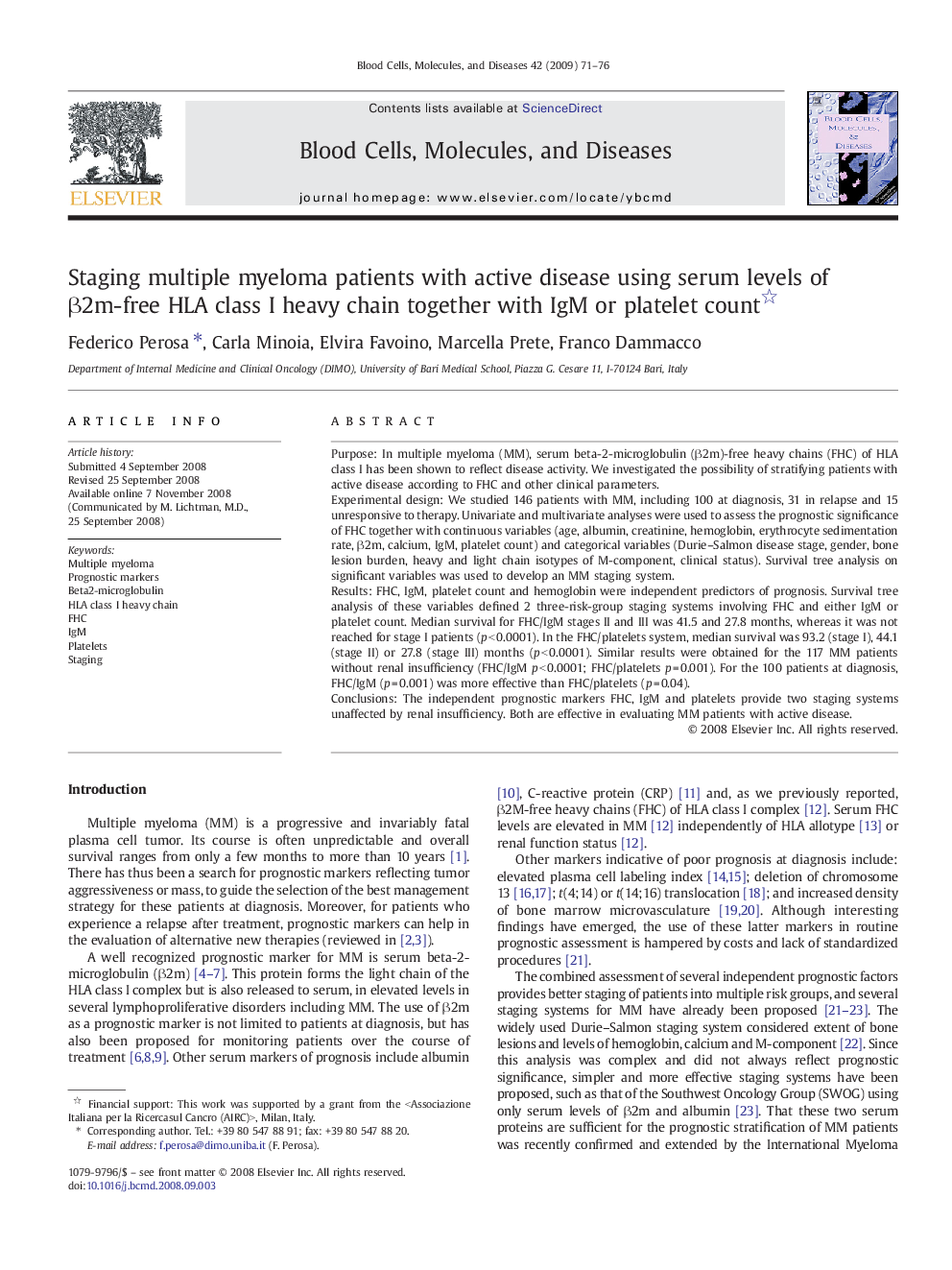| Article ID | Journal | Published Year | Pages | File Type |
|---|---|---|---|---|
| 2827617 | Blood Cells, Molecules, and Diseases | 2009 | 6 Pages |
Purpose: In multiple myeloma (MM), serum beta-2-microglobulin (β2m)-free heavy chains (FHC) of HLA class I has been shown to reflect disease activity. We investigated the possibility of stratifying patients with active disease according to FHC and other clinical parameters.Experimental design: We studied 146 patients with MM, including 100 at diagnosis, 31 in relapse and 15 unresponsive to therapy. Univariate and multivariate analyses were used to assess the prognostic significance of FHC together with continuous variables (age, albumin, creatinine, hemoglobin, erythrocyte sedimentation rate, β2m, calcium, IgM, platelet count) and categorical variables (Durie–Salmon disease stage, gender, bone lesion burden, heavy and light chain isotypes of M-component, clinical status). Survival tree analysis on significant variables was used to develop an MM staging system.Results: FHC, IgM, platelet count and hemoglobin were independent predictors of prognosis. Survival tree analysis of these variables defined 2 three-risk-group staging systems involving FHC and either IgM or platelet count. Median survival for FHC/IgM stages II and III was 41.5 and 27.8 months, whereas it was not reached for stage I patients (p < 0.0001). In the FHC/platelets system, median survival was 93.2 (stage I), 44.1 (stage II) or 27.8 (stage III) months (p < 0.0001). Similar results were obtained for the 117 MM patients without renal insufficiency (FHC/IgM p < 0.0001; FHC/platelets p = 0.001). For the 100 patients at diagnosis, FHC/IgM (p = 0.001) was more effective than FHC/platelets (p = 0.04).Conclusions: The independent prognostic markers FHC, IgM and platelets provide two staging systems unaffected by renal insufficiency. Both are effective in evaluating MM patients with active disease.
